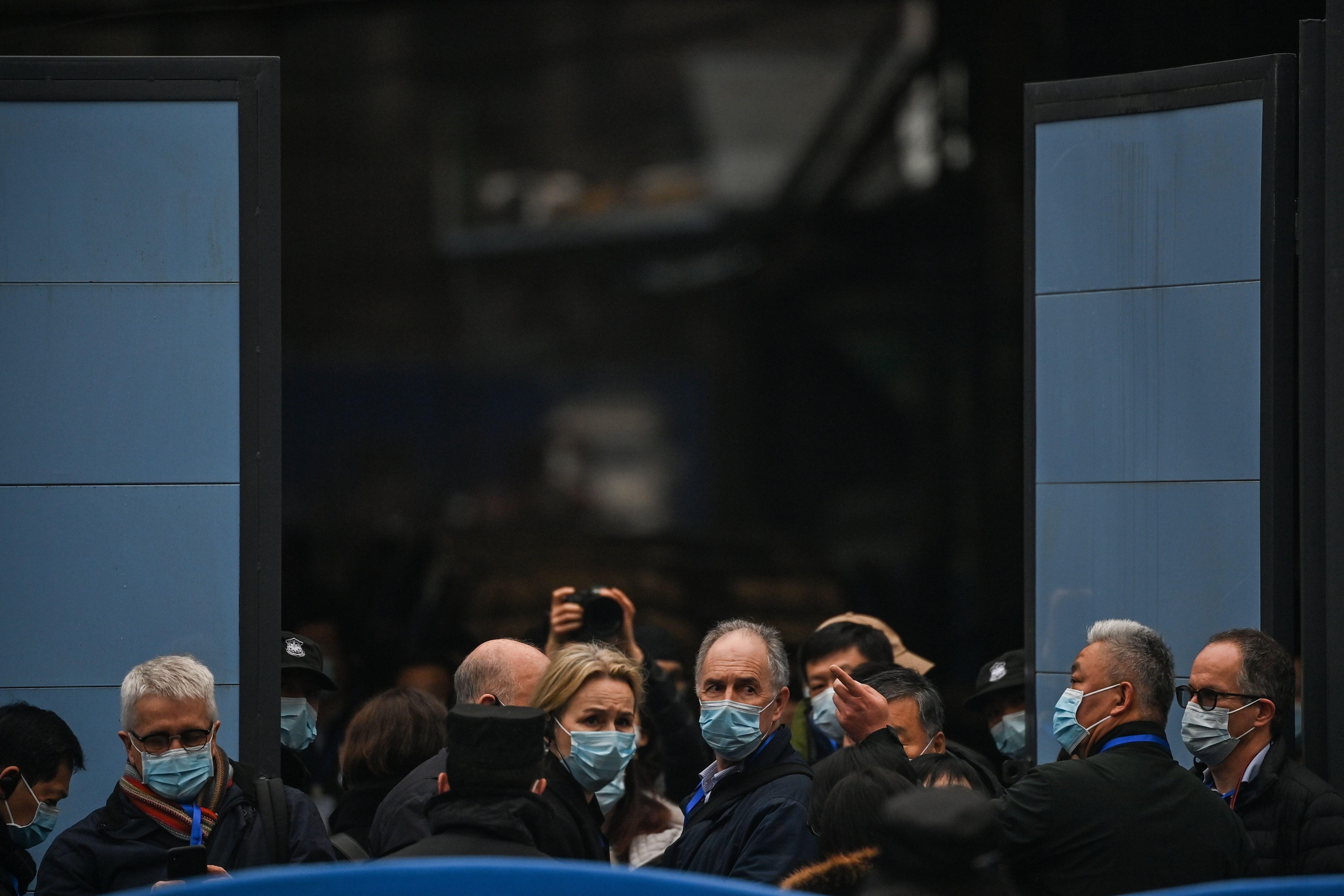
We know a lot about masks and vaccines, but much less about new COVID-19 variants.
James Martin/CNETIn December 2019, a group of people in Wuhan, China, began to experience what was described as an unknown pneumonia, later identified as COVID-19, which quickly blanketed the globe. To date, there have been more than 290 million infections, resulting in almost 5.5 million deaths.
Since then, advances against SARS-CoV-2, the virus that causes COVID-19, have come rapidly: Multiple effective vaccines emerged in a single year, far faster than the typical four to 10 years of development. And Pfizer has just received FDA authorization for its COVID antiviral drug Paxlovid, which the pharmaceuticals giant says could cut the risk of hospitalization or death from COVID-19 by up to 89%.
Infectious disease experts have discovered much about the science of COVID-19 and can now quickly identify mutations, like those found in the delta and omicron variants.
However, two years on, as the US passes 800,000 deaths from COVID — and tens of millions more infections and hospitalizations — scientists are still struggling to answer some of our biggest questions. For additional information on COVID-19, here’s what we know about the new omicron variant and how to get free at-home testing kits. And be sure to learn how to put your vaccine card on your phone.
Why does COVID make some people more sick, including long COVID?
We know the virus causes symptoms ranging from headaches, fever and disorientation to nausea and vomiting, and even loss of taste or smell. While scientists continue to piece together who is more likely to get hit with these outcomes, they still lack answers about why some experience serious illness and others don’t.
Age is definitely the biggest correlation for severe disease, Gigi Gronvall, a senior scholar at the Johns Hopkins Center for Health Security, told CNET. “But there have been 29-year-olds who have died, children who have died, when all indications suggest they should have had a mild disease course.”
Scientists are also trying to get their arms around “long COVID” — a range of symptoms that can run on for weeks or even months after a patient is first infected. The World Health Organization has issued a definition that includes a variety of lingering symptoms — including fatigue, trouble breathing, sleeplessness, difficulty focusing, anxiety and depression — and the list keeps changing. Even so, the condition’s cause is not clearly known.
“After two years, we don’t understand much about long COVID, and don’t know its prevalence with omicron after vaccination,” Bob Wachter, the chair of the department of medicine at the University of California, San Francisco, tweeted Wednesday. “It remains a hardship for millions, and a lingering concern for me as I think about the prospect of getting even a ‘mild’ case of omicron.”
While some general symptoms, like loss of smell and taste, appear less common with omicron, Gronvall said, “we just don’t know if people with that variant will suffer long COVID. We just haven’t had enough time to tell.”
How long will immunity from vaccines last with variants like omicron?
The first COVID-19 vaccines went into arms a year ago in the US, and the two most effective in the US — from Moderna and Pfizer/BioNTech — took a unique approach: Using Messenger RNA (mRNA) to teach our cells how to make a protein that will trigger an immune response to the virus.
While researchers have been studying mRNA vaccines “for decades,” according to the CDC, this marks the first time they’ve been made available to the public. Scientists continue to gather information on how effective they are — and how long until their effectiveness begins to decline.
“We are definitely still figuring that out,” Gronvall said. “We’re seeing that protection wanes earlier than six months, which is why boosters are being recommended at six months.”
As new variants like the quick-spreading omicron emerge, she added, “whether the booster will be sufficient for a long period of time or not is something we still need to uncover.”
According to the World Health Organization, the Pfizer and Moderna vaccines are far less effective in preventing infection by the omicron strain than earlier COVID-19 variants. Other vaccines — including those from Johnson & Johnson, AstraZeneca, and ones manufactured in Russia and China — do even less to prevent infection by the omicron variant, The New York Times reported.
Still, fully vaccinated individuals are much less likely to experience severe symptoms, hospitalization and death, according to Harvard Medical School, especially if they receive a booster shot.
“It’s not a worst-case scenario, where the vaccines are ineffective,” Gronvall said. “In lab scenarios we’ve seen, vaccines provide less protection. That seems to be borne out in reality, but we can’t project yet into the real world.”
Will there be more variants like delta and omicron?
Viruses constantly mutate. Sometimes these mutations result in new disease strains that emerge quickly and disappear, according to the CDC. Other times, they persist and create spikes in the rate of infection and disease. In two years, COVID has mutated into five “variants of concern,” according to WHO, based on the severity of disease, the effectiveness of medical countermeasures and the strain’s ability to spread from person to person.
The alpha, beta and gamma variants were all downgraded to “variants being monitored” in September, with delta and omicron still considered variants of concern. This week federal health officials declared the omicron variant the dominant strain in the US, accounting for nearly three-quarters of new infections. Preliminary studies indicate illness caused by omicron may be less severe than delta, which doubled the hospitalization rate of the original alpha strain, but is also far more contagious.
Health officials warn that the longer the pandemic lasts and the longer large groups remain unvaccinated, the more time the virus will have to spread and mutate. While researchers can quickly map and identify variants, they need time to see how dangerous a new strain is as they gather data on hospitalizations and deaths.
“We’re still not great at looking at new variants and projecting what that means in the real world,” Gronvall said. “We have better tools to read genetic material and determine when variants emerge. But we can’t read them like a book.”

Researchers with the WHO’s investigative team arrive at the Huanan Seafood Market on Jan. 31, 2021.
Hector Retamal/GettyWhere did COVID-19 come from?
Experts are still not certain how COVID-19 emerged. The prevailing theory is that it leaped from an animal to a human. The first symptoms of COVID-19 were reported in Wuhan among people who either worked or lived near Huanan Seafood Wholesale Market, an open-air “wet market” that sold fresh beef, poultry, fish and produce.
According to numerous sources, including a June 2021 study in Scientific Reports, the market also traded in exotic animals as pets and food, including badgers, hedgehogs, civets and porcupines.
Others, however, claim that SARS-CoV-2 emerged in a lab — with a naturally occurring or human-engineered virus infecting a researcher, who spread it to others. While there has been no solid evidence to back the lab-leak theory, former President Donald Trump and his supporters pushed the lab-origin theory through 2020.
“There’s a lot of people using this as a vehicle for other agendas,” Gronvall said. “And certainly the Chinese have been lying.” Government officials originally claimed that there were no contraband animals present at the market, she added, but researchers looking for a separate tick-borne disease photographed many illegal animals there, “stuffed together in close quarters, in poor health and stress conditions, in the months before cases were identified.”
“People are looking to blame [someone],” Gronvall said. “They’re not looking for an explanation that is very human and plausible. But there’s no virus that’s been identified in the laboratory that’s at all close to what ended up spreading around the world.”
Because the Chinese government shut down the Huanan market and removed all evidence almost as soon as cases of COVID were being associated with it, Gronvall said, researchers are not likely to ever find the exact animal culprit.
“It wasn’t like SARS in 2003, when you had these palm civets there that were all infected and it was a pretty quick thing,” she said.
To uncover more about the emergence of COVID-19, this summer, President Joe Biden directed the federal intelligence community to “redouble their efforts” to investigate the virus’ origins.
What we do know, heading into the third year of the disease, is we have a medicine cabinet of tools — including vaccines and antiviral pills — we didn’t have when we first learned of COVID-19. For more, here’s what we know about the Moderna and Pfizer vaccine boosters and how to pick which one to get.
The information contained in this article is for educational and informational purposes only and is not intended as health or medical advice. Always consult a physician or other qualified health provider regarding any questions you may have about a medical condition or health objectives.
